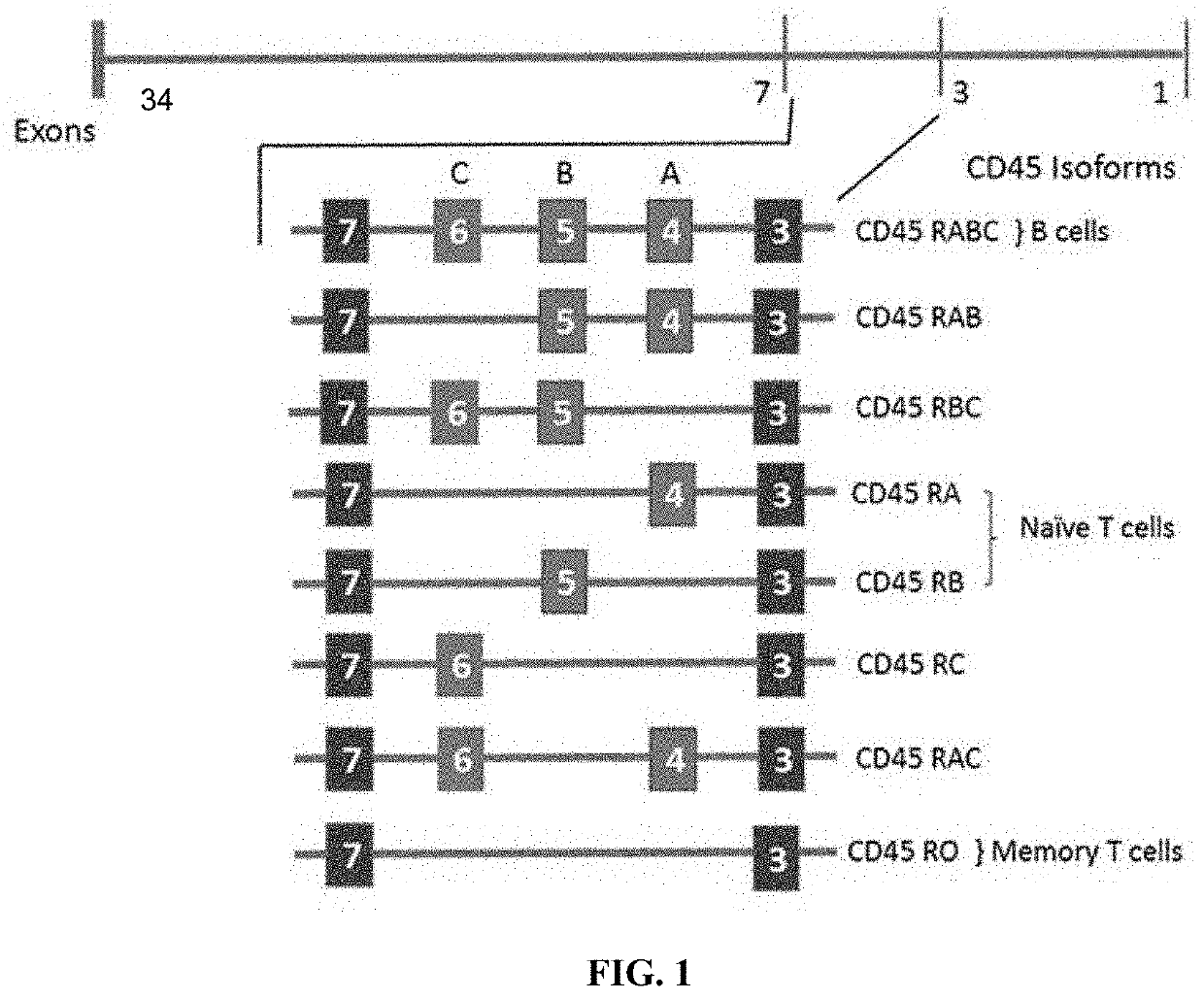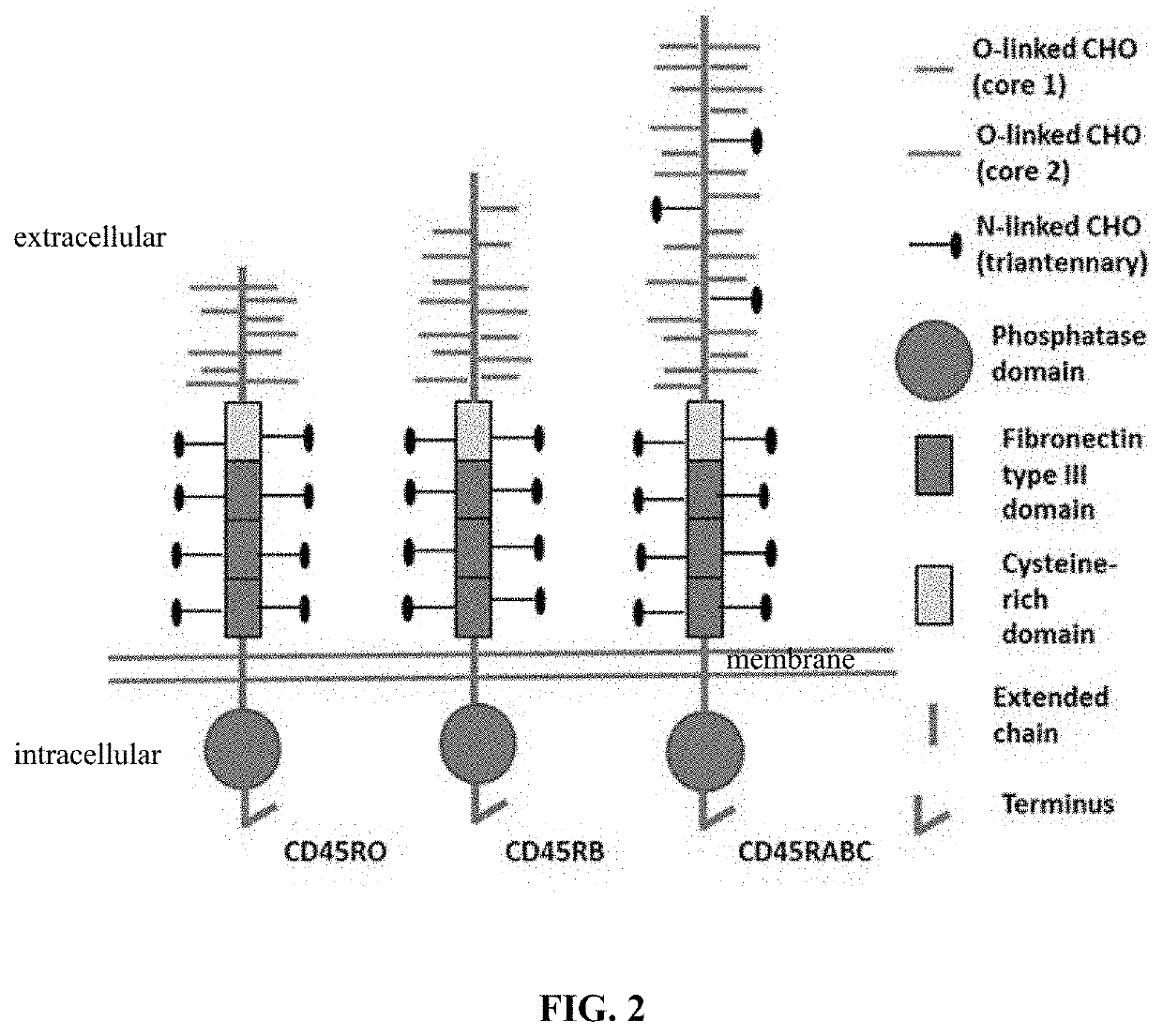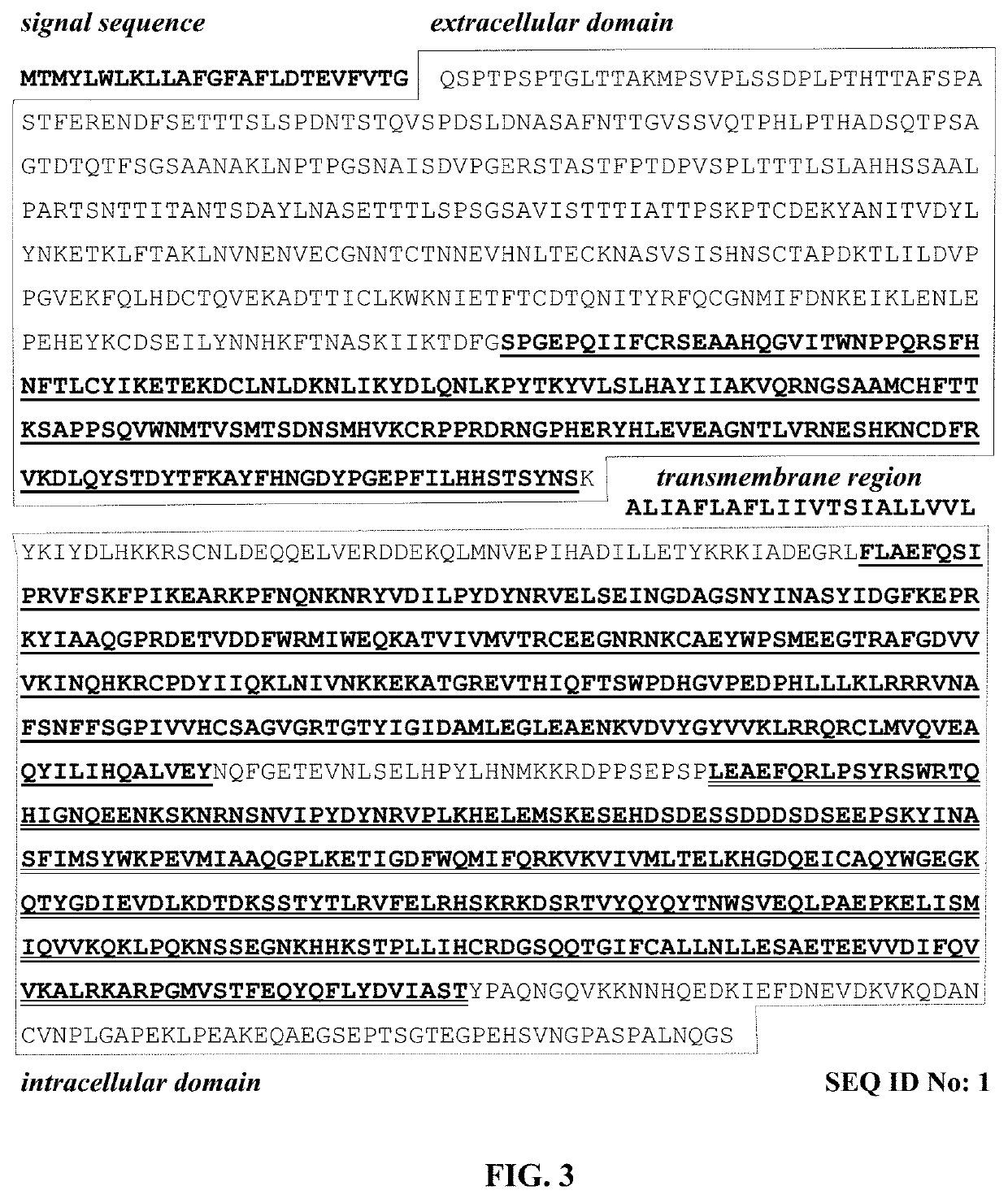Molecules and their derivatives directed aganist cd45
a technology of cd45 and molecules, which is applied in the field of cd45, can solve the problems of multi-faceted and complex immune evasion in the tumor micro-environment, prolonging the persistence of the population of cells expressing car/tcr or til, and dampening the activation and efficacy of car t-cell therapies
- Summary
- Abstract
- Description
- Claims
- Application Information
AI Technical Summary
Benefits of technology
Problems solved by technology
Method used
Image
Examples
example 1
n of Anti-CD45 Immunoglobulin BC8
[0219]The murine anti-CD45 mAb BC8 was prepared from a hybridoma (ATCC No. HB-10507) that was initially developed by fusing mouse myeloma NS1 cells with spleen cells from a BALB / C mouse hyperimmunized with human phytohemagglutinin (PHA)-stimulated mononuclear cells. The original fused cells, after screening for microbial contaminations, were cultured using the JRH-Biosciences EXCell 300 medium supplemented with 1-2% Fetal Bovine Serum (FBS).
[0220]The hybridoma cell line was adapted for culture in a serum-free culture medium. Briefly, the cells in culture were slowly and gradually weaned of the serum albumin using the combo medium supplemented with glutamine, cholesterol, insulin and transferrin. The cells were then grown in up to 500 L scale to a density of >1 e6 cells / mL. The medium was harvested and processed for the purification of the anti-CD45 antibody using a combination of cation exchange chromatography, Protein-A chromatography, and anion exc...
example 2
of Anti-CD45 Immunoglobulin BC8
[0222]Immunoreactive agents with an epitope defined herein may be sub-fragment(s) of the antibody BC8. This includes single chain variable fraction (scFv) molecules comprising SEQ ID NO: 2 and SEQ ID NO: 3. Such molecules are typically produced in E. coli by standard production methods. Further, Fab fragments of BC8 may be alternatively produced for binding to any of the epitopes of CD45 defined herein. Exemplary Fab fragments include those defined by SEQ ID NOS: 15 and 17, which may contain SEQ ID NO: 3 and SEQ ID NO: 12. A chimeric Fab may also be generated using SEQ ID NO: 2 and SEQ ID NO: 13, and / or SEQ ID NO: 3 and SEQ ID NO: 14. These include constant regions of a human IgG molecules, such as the heavy chain of IgG1 and the light chain kappa region. Other constant regions from other IgG molecules may be used, such as from human IgG2 and / or IgG4.
example 3
g of the Anti-CD45-Immunoglobulin BC8
[0223]DNA Sequence: Total RNA was isolated from the hybridoma cells following the technical manual of Trizol® Reagent. The total RNA was analyzed by agarose gel electrophoresis and was reverse transcribed into cDNA using isotype-specific anti-sense primers or universal primers following the technical manual of PrimeScript™ 1st Strand cDNA Synthesis Kit. The antibody fragments of VH, VL, CH and CL were amplified and were separately cloned into a standard cloning vector using standard molecular cloning procedures. Colony PCR screening was performed to identify clones with inserts of correct sizes. More than five single colonies with inserts of correct sizes were sequenced for each antibody fragment. The complete nucleotide sequence of the light and the heavy chains are shown in FIGS. 7 and 8.
[0224]Protein Sequencing by LC-MS / MS:
[0225]The anti-CD45-antibody was sequenced using the mass spectrometry peptide mapping approach. The anti-CD45-antibody wa...
PUM
| Property | Measurement | Unit |
|---|---|---|
| threshold | aaaaa | aaaaa |
| threshold | aaaaa | aaaaa |
| weight | aaaaa | aaaaa |
Abstract
Description
Claims
Application Information
 Login to View More
Login to View More - R&D
- Intellectual Property
- Life Sciences
- Materials
- Tech Scout
- Unparalleled Data Quality
- Higher Quality Content
- 60% Fewer Hallucinations
Browse by: Latest US Patents, China's latest patents, Technical Efficacy Thesaurus, Application Domain, Technology Topic, Popular Technical Reports.
© 2025 PatSnap. All rights reserved.Legal|Privacy policy|Modern Slavery Act Transparency Statement|Sitemap|About US| Contact US: help@patsnap.com



